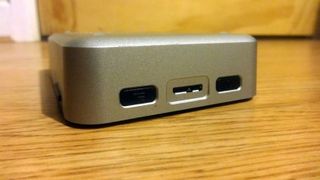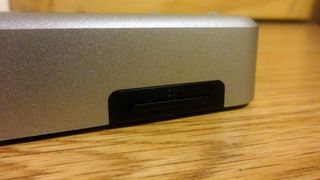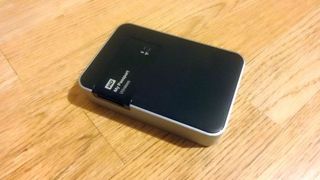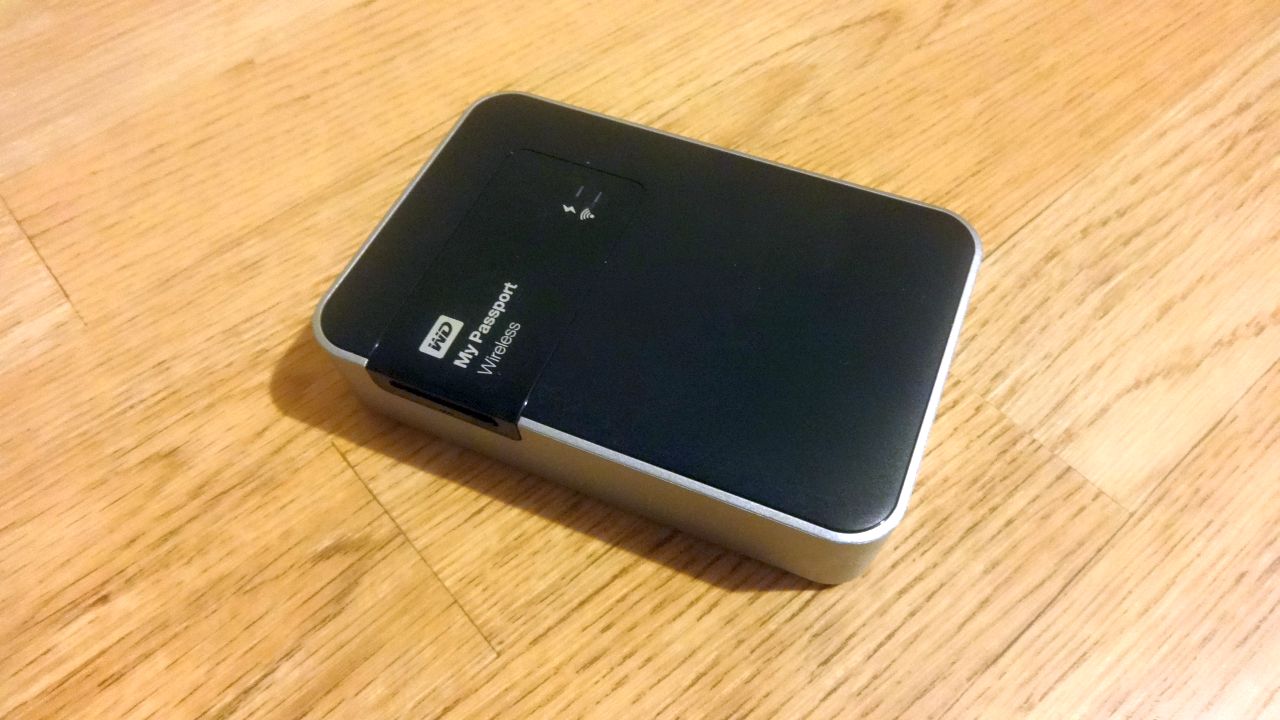TechRadar Verdict
Western Digital's My Passport Wireless is a decent performer but didn't wow us. The price premium outweighs the benefits of the card reader and advanced features bundled in this stocky external hard disk drive.
Pros
- +
Support for FTP
- +
Bundled card reader
- +
Power button
- +
Two-year warranty
Cons
- -
Higher than expected price
- -
Only average performance
Why you can trust TechRadar
Western Digital introduced the My Passport Wireless 2TB drive in response to a perceived increase in demand for high capacity wireless storage devices. Seagate with its 2TB Wireless Plus drive and LaCie (a Seagate subsidiary) with the Fuel 2TB launched on the market months earlier.
Of the three, Western Digital is the most expensive, selling for just under £196 (around $300, AU$375) on Amazon compared to £150 (around $230, AU$285) for the Seagate model and a smidgen over £164 (around $255, AU$310) for the LaCie drive.
To put these figures in context, a bog standard 2TB USB 3.0 hard disk drive like the Toshiba Canvio Basics costs less than £67 (around $105, AU$130), about a third of the price of the My Passport Wireless.

How to justify such a massive price difference? Well, wireless hard disk drives are not just storage devices. In the case of the My Passport Wireless, the drive enclosure packs a 3,400mAh battery (which WD says will power the drive for up to six hours – it will of course depend on your usage), a Cortex-A8 system-on-chip (similar to the one found in the iPhone 4), 512MB of RAM, 128MB of flash memory, an SD card reader and a dual-stream 2x2 MIMO Wi-Fi module.
At its heart is a big hard disk drive, a 2TB 2.5-inch model from WD's stable, the WD20NPVX, which runs at 5,200 RPM and has a mere 8MB buffer. Interestingly, the bare drive by itself costs more than £100 (around $155, AU$190).
Design
Physically, the drive is chunkier and heavier than I'd expected, at about twice the size (and weight) of the Toshiba Canvio mentioned earlier in this review. That's partly due to the built-in SD card slot that's located on one of its sides, and also the fact that the drive itself is a 15mm, four-platter model.

The front has two LED indicators (for power and Wi-Fi strength) as well as a power button on one side plus a standard A-type USB 3.0 connector. Next to the latter is a dual-purpose button that displays the battery level when the device is switched off and when on, which also allows you to connect to Wi-Fi clients.

Performance
Newer models like the Samsung SpinPoint M9T drive – as used in the Seagate Wireless Plus and the LaCie Fuel – have three platters and a bigger buffer capacity (32MB). The overall product is usually not only thinner but also faster.
That became obvious in our test when the MyPassport drive only managed 1626 points on the PCMark 8 benchmark, 17% less than what the LaCIE Fuel 2TB achieved. It also hit 108MBps/106MBps (read/write) when connected via a USB cable.
Another smart feature is support for FTP which will be welcomed by advanced users, especially photographers and anyone paranoid about saving their data to the cloud automatically.
Power users will also like the fact that it can be used as a bridge (to share an internet connection with other devices) and includes a DLNA media server, and the content of any SD card inserted in the reader can be automatically imported (copied or moved) to the drive. As expected though, you cannot use the device as a portable drive and a mobile media server at the same time.
Note that you will need Western Digital's My Cloud app in order to access most of these features and to tinker with more advanced settings.
The app, which is compatible across a number of WD's personal cloud storage products, offers a decent amount of functionality although file support is limited (cookie points for the clean user interface, though).
Verdict
All in all, the My Passport Wireless offers average value for money. It's heavier and bulkier than the competition, and the drive's performance won't set the world on fire. If you are not interested in its advanced features, then there are other products on the market (like the LaCie Fuel or the Seagate Wireless 2TB) that offer a better performance/value ratio.
The intrinsic value of the incorporated card reader for a photographer is debatable when a few points are taken into account. Firstly, a spinning hard disk drive is more prone to failure than a solid-state one, and secondly, good, large capacity microSD/SD cards are affordable (a decent branded 256GB SDXC card costs as little as £143 or around $220, AU$270). Finally, a wireless media reader like this £25 (around $40, AU$50) Kingston G2 Mobilelite might actually be a better bet when combined with a 2TB drive, costing around half the price if you really want to back up your pictures.
Note: Western Digital issued a firmware update in November that solves some nagging issues including improving the SD card transfer speed as well as fixing some security vulnerabilities (including Shellshock).

Désiré has been musing and writing about technology during a career spanning four decades. He dabbled in website builders and web hosting when DHTML and frames were in vogue and started narrating about the impact of technology on society just before the start of the Y2K hysteria at the turn of the last millennium.
Most Popular


